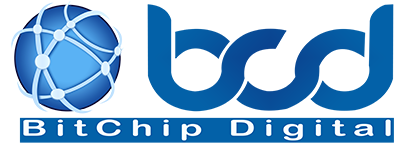
Understanding how to optimize content for improving conversion rate is vital for business success. It doesn’t matter the nature of your business. Your business success is down to your conversion rate, whether you’re selling physical products, digital products, or rendering services.
Two things determine your company’s success: traffic and conversion rate. Traffic implies the number of people who know your business exists and visits your website. Conversion rate involves the percentage of visitors who become paying clients.
Unfortunately, many businesses only focus on driving traffic or creating awareness for their offerings. They are comfortable with average conversion rate. The International CRO Agency believes businesses in this category can do better. You can achieve higher conversion rates and generate more revenue for your business.
Here is a guide for improving the conversion rate.
What Is Conversion Rate?
Before we discuss how to optimize content to improve conversion rate, let’s define conversion rate.
Conversion rate is the number of people who visit your website compared to those who take action. It involves the number of people who purchased your products, filled out your forms, requested your services, subscribed to your email newsletter, etc.
The conversion rate is the percentage of people who performed the action required of them. Here is a simple illustration.
Suppose your website received 100,000 visitors but only purchased your product. Your intention was for visitors to purchase your products.
In this case, your conversion rate is just 8%.
In all fairness, this conversion rate is poor. Imagine getting 100,000 visitors, and only 8% of them took action. Optimizing your content can improve your conversion rate. A higher conversion rate means your business generates more revenue or leads. It also means you’ll have a winning strategy to rake in consistent sales.
Note: Conversion rate optimization for content is a unique process. It differs from the conversion rate optimization of home pages, landing pages, and even e-commerce websites.
It involves strategies like creating compelling blog posts that rank high in the search engine result pages (SERPs) for valuable keywords. Prospects that discover and read the blog post should be able to take action (buy the product, subscribe to your email newsletter, etc).
Here are strategies you can implement to optimize your content to improve your conversion rate.
Target keywords with high-buying intent:
What’s the logic behind this idea? It is simple. If you target a keyword with high buying intent, you’ll likely generate more sales. Keywords with high buying intent are keywords whose searchers are highly interested in making a purchase.
On the contrary, targeting a keyword with low buying intent won’t generate more sales for your business. You’ll likely get a handful of visitors but low sales. That’s because the people using the keyword to search have low interest in your offering.
The higher you rank on the SERPs, the higher your chances of getting more visitors, but sales could be lower because of the intent.
Optimize your content to rank high for your target keywords:
The first tip is to target keywords with high buying intent, which is great – but it doesn’t end there. Finding the right keywords is one thing, and optimizing your content to rank for your target keyword is another.
Optimizing content to rank high on the search engine result page takes more than sprinkling keywords in your content. It involves a process that we’ll be discussing shortly.
- Choose killer topics: It’s vital to generate interesting topic ideas. Choose topics your audience will be interested in. After generating topic ideas, find the right keywords that match the topic. Your choice of keywords should have business value.
- Conduct SERP analysis: Carefully analyze each keyword’s search engine result pages. Done right, you’ll have a clear idea of topics that haven’t been covered that you can cover to rank high in SERPs.
- Determine the structure of your content: Your analysis will help you better understand how to structure your content to rank high in SERPs and deliver value to your audience. Content structure is important, as it can impact readability, search engine ranking, and user experience.
- Content writing: From the analysis, you’ll know the void that needs filling. You’ll clearly know how to present your content to sell your products or services to your target audience.
Write compelling content:
How do you sell your products or services in a blog post without sounding too promotional? How do you convince prospects to choose your products or services among the thousands? That is where your content writing skills come into play.
Here are tips on how to write compelling content that can improve your conversion rate.
- Avoid generic introductions. If your introductions are generic, you’re automatically telling your target audience (who might have some knowledge about your products or services) that you are below their level. This can turn them off.
- Capture prospects’ pain points: Learn about your customers’ or target audience’s pain points before you start writing. When you do, ensure that you highlight them earlier in your content. By doing so, you can earn their trust and encourage them to continue reading your blog posts.
- Highlight how your products or services can solve their pain point: Don’t just stop at mentioning your product; go into specifics; describe how it benefits prospects and can resolve their challenges.
- Highlight how your products or services differ from others. What makes your products or services special? What makes it different from others?
Conclusion
Are you looking for more tips on how to optimize content for improving conversion rate? There are diverse ways to achieve this.
With well-optimized content, you can rank high on the search engine result pages and generate more sales. You can replicate the strategy to generate more sales and leads consistently.
A well-optimized blog post will not only rank high in SERPs. Prospects who read the blog post will be highly convinced to take action. They will find your CTA and perform the action required of them. This could involve purchasing your products and services or subscribing to your webinars or email newsletters.
